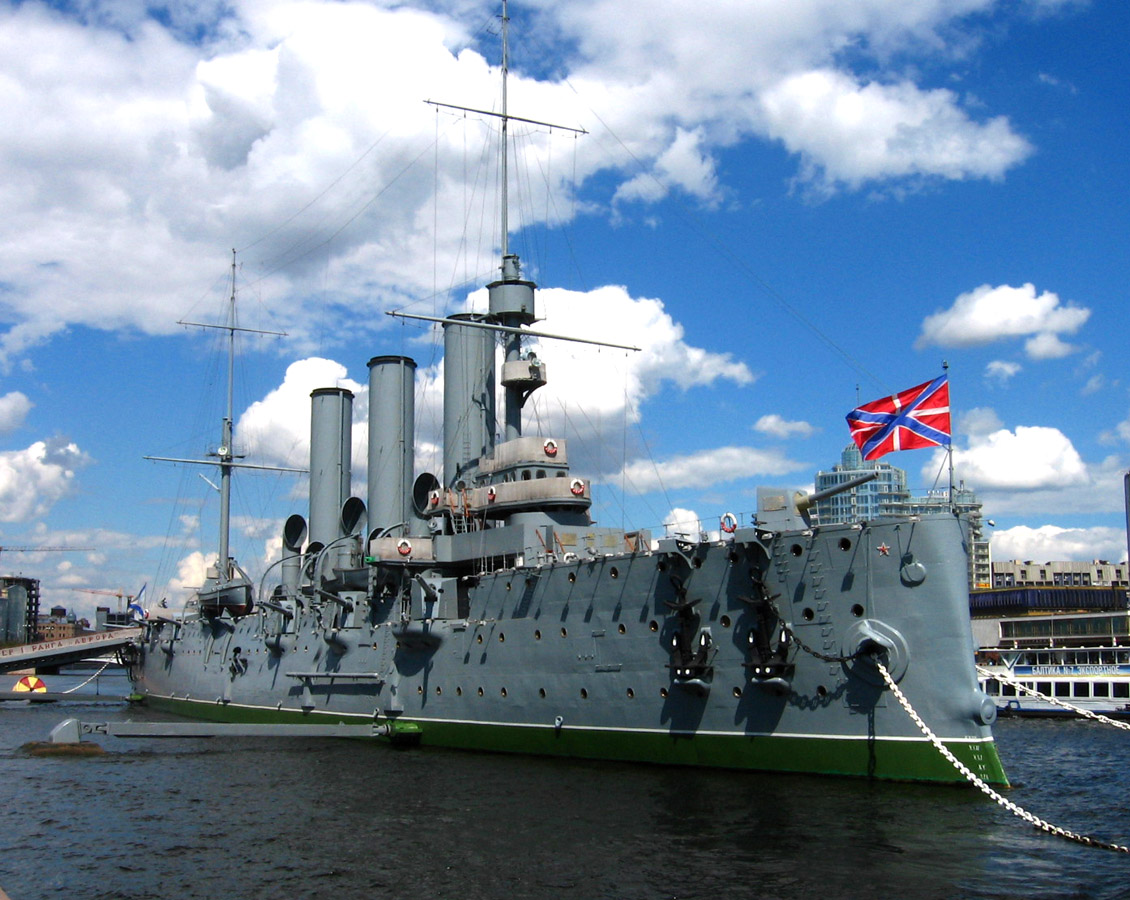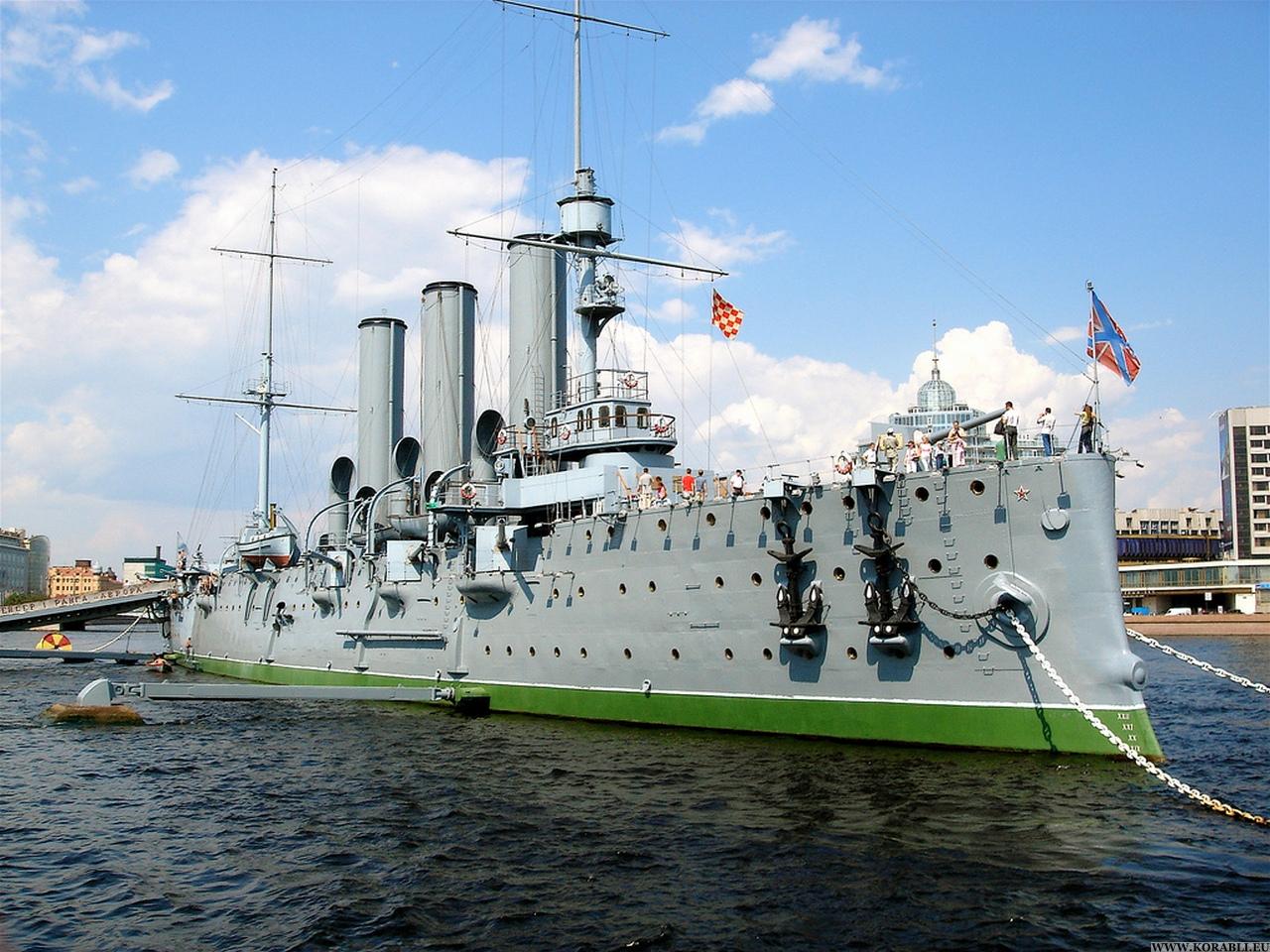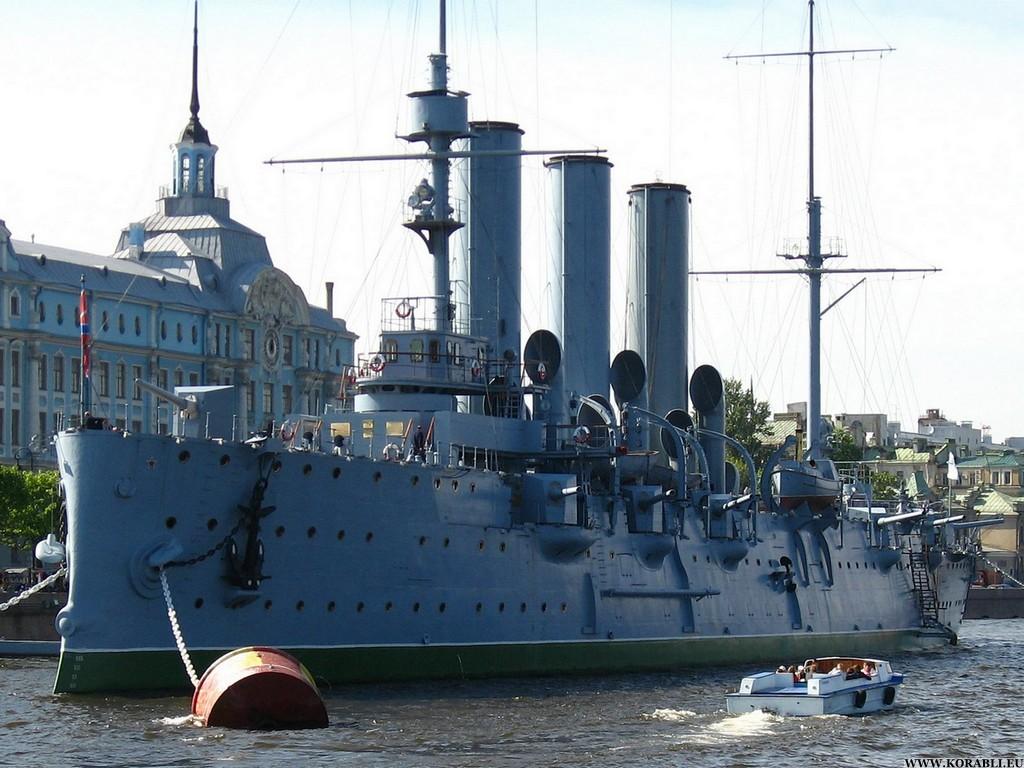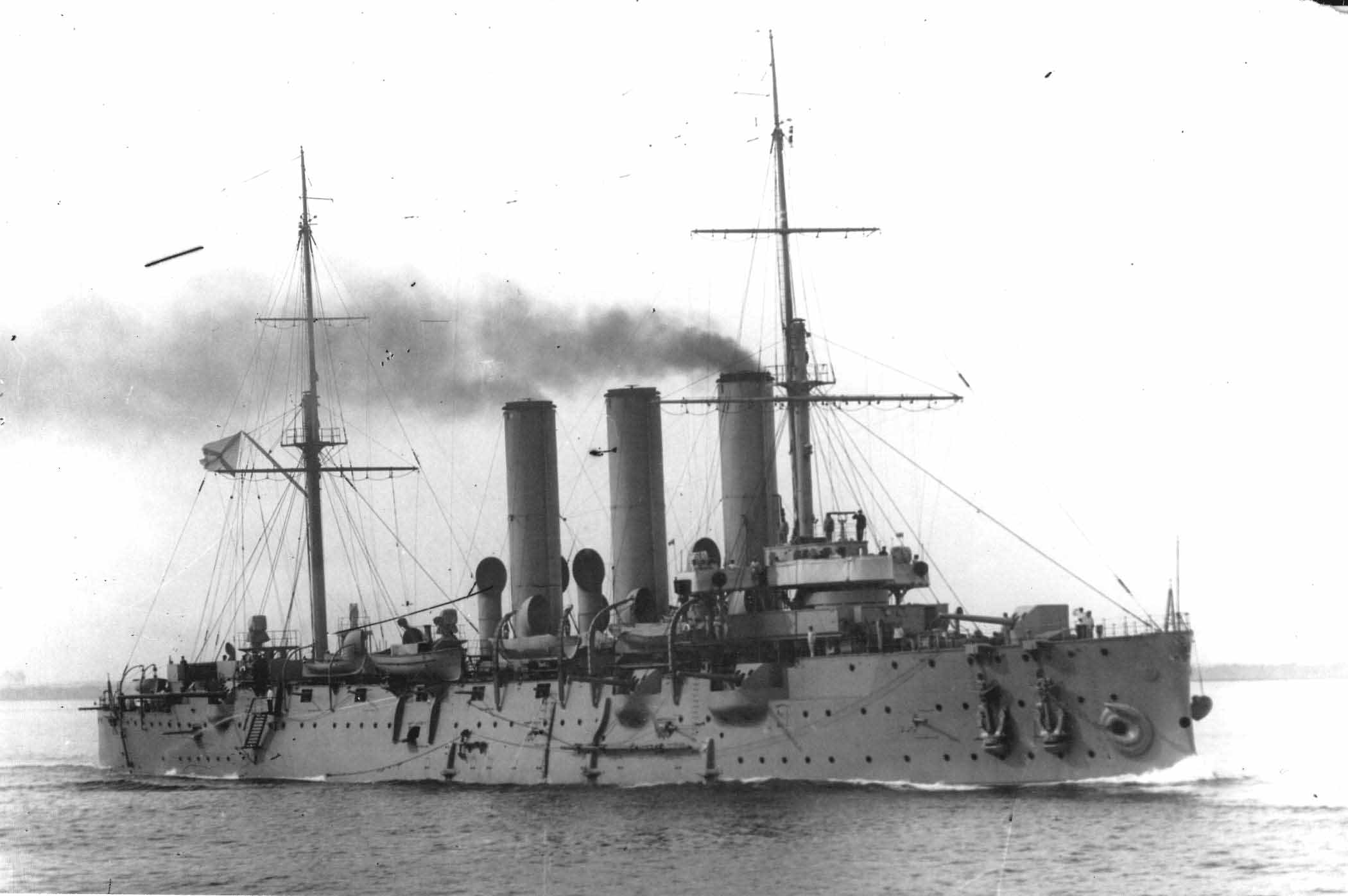Aurora is a 1900 Russian protected cruiser, currently preserved as a museum shipin St. Petersburg. Aurora was one of three Pallada-class cruisers, built in St. Petersburg for service in the Pacific Far East. All three ships of this class served during the Russo-Japanese War. Aurora survived the Battle of Tsushima and was interned under U.S. protection in the Philippines, eventually returned to the Baltic Fleet. The second ship, Pallada, was sunk by the Japanese at Port Arthur in 1904. The third ship, Diana, was interned in Saigon after the Battle of the Yellow Sea. One of the first incidents of the October Revolution in Russia took place on the cruiser Aurora.
Soon after completion, in November 1903, Aurora received orders to sail with a group of reinforcements to the Russian Pacific Fleet. However, she suffered from repeated mechanical failures and had to be repaired at several ports along the way. When word was received of the start of the Russo-Japanese War while at Djibouti, she was detached from the reinforcement fleet and sent back to the Baltic.[3] After refitting,Aurora was ordered back to Asia as part of the Russian 2nd Pacific Squadron, a collection formed from the Russian Baltic Fleet, under the command of Vice-AdmiralZinovy Rozhestvensky. On the way to the Far East, Aurora sustained light damage from confused friendly fire, which killed the ship's chaplain and a sailor, in the Dogger Bank incident.
On 27 and 28 May 1905 Aurora took part in the Battle of Tsushima, along with the rest of the Russian squadron. During the battle her captain, Captain 1st rank Eugene R. Yegoryev, and 14 crewmen were killed. The executive officer, Captain of 2nd rank Arkadiy Konstantinovich Nebolsine, took command although wounded. After that Aurora, covering other, much slower Russian vessels, became the flagship of Rear-Admiral Oskar Enkvist, and with two other Russian cruisers broke through to neutral Manila, where she was interned by United States authorities from 6 June 1905 until the end of the war.
In 1906 Aurora returned to the Baltic and became a cadet training ship. From 1906 until 1912 the cruiser visited a number of other countries; in November 1911 she was in Bangkok as part of the celebrations in honour of the coronation of the new King of Siam.
During World War I Aurora operated in the Baltic Sea performing patrols and shore bombardment tasks. In 1915, her armament was changed to fourteen 152 mm (6 in) guns. At the end of 1916, she was moved to Petrograd (the renamed St. Petersburg) for a major repair. The city was brimming with revolutionary ferment and part of her crew joined the 1917 February Revolution. A revolutionary committee was created on the ship, with Aleksandr Belyshev elected as captain. Most of the crew joined theBolsheviks, who were preparing for a Communist revolution.
At 9.45 p.m on 25 October 1917 (O.S.) a blank shot from her forecastle gun signaled the start of the assault on the Winter Palace, which was to be the beginning of the October Revolution. In summer 1918, she was relocated to Kronstadt and placed into reserve.In 1922 Aurora returned to service as a training ship. Assigned to the Baltic Fleet, from 1923, she repeatedly visited the Baltic Sea countries, including Norway in 1924, 1925, 1928 and 1930, Germany in 1929 and Sweden in 1925 and 1928. On 2 November 1927,Aurora was awarded the Order of the Red Banner for her revolutionary merits.
During the Second World War, the guns were taken from the ship and used in the land defence of Leningrad. The ship herself was docked in Oranienbaum port, and was repeatedly shelled and bombed. On 30 September 1941 she was damaged and sunk in the harbour.
After extensive repairs from 1945 to 1947, Aurora was permanently anchored on the Neva in Leningrad (now St. Petersburg again) as amonument to the Great October Socialist Revolution. In 1957 she became a museum-ship. On 22 February 1968 she was awarded theOrder of the October Revolution, whose badge portrays Aurora herself.As a museum ship, the cruiser Aurora became one of the many tourist attractions of Leningrad (now Saint Petersburg), and continued to be a symbol of the October Socialist Revolution and a prominent attribute of Russian history. In addition to the museum space, a part of the ship continued to house a naval crew whose duties included caring for the ship, providing security and participating in government and military ceremonies. The crew was considered to be on active duty and was subject to military training and laws.
Having long served as a museum ship, from 1984 to 1987 the cruiser was once again placed in her construction yard, the Admiralty Shipyard, for capital restoration. During the overhaul, due to deterioration, the ship's hull below the waterline was replaced with a new welded hull according to the original drawings. The cut off lower hull section was towed into the Gulf of Finland, to the unfinished base at Ruchi, and sunk near the shore. The restoration revealed that some of the ship parts, including the armour plates, were originally made in Britain, which put in doubt the previously maintained image of the cruiser as a marvel of authentic Russian naval engineering.
Aurora stands today as the oldest commissioned ship of the Russian Navy, still flying the naval ensign under which she was commissioned, but now under the care of the Central Naval Museum. She is still manned by an active service crew commanded by a Captain of the 1st Rank.
From 1956 to the present day 28 million people have visited the cruiser Aurora.
In January 2013 Russian Defence Minister Sergey Shoygu announced plans to recommission Aurora and make her the flagship of theRussian Navy due to her historical and cultural importance. On 21 September 2014 the ship was towed to the Admiralty Shipyard inKronstadt to be overhauled, to return in 2016.













